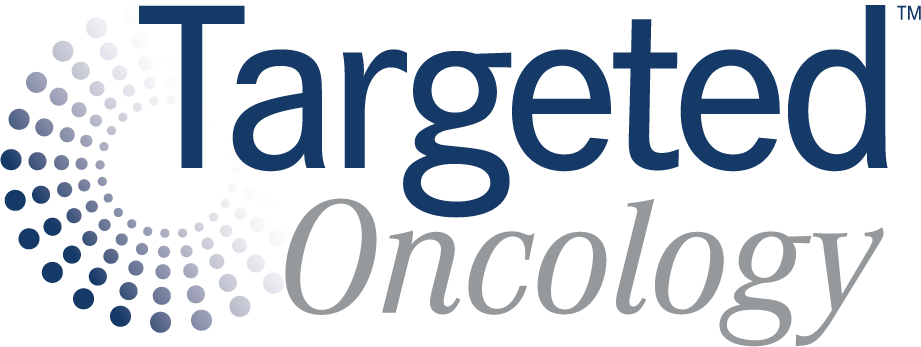Discussing Lung Cancer NGS Testing and EGFR Treatment Strategies
During a live event, Alexander I. Spira, MD, PhD, and participants NGS testing practices and the rationale behind their approaches.
Alexander I. Spira, MD, PhD (Moderator)
Codirector
Virginia Cancer Specialists Research Institute
Director, Thoracic and Phase I Program
Clinical Assistant Professor, Johns Hopkins Medicine
Fairfax, VA

CASE SUMMARY
- A 55-year-old construction worker presented to primary care physician with dry cough, fatigue, and sporadic headaches.
- Medical history: hypertension controlled on candesartan
- Social history: prior smoking history
- Initial physical exam: blood pressure, 148/70; decreased breath sounds (left lower lobe); weight 176 lbs
- ECOG performance status: 1
- Chest X-ray: revealed patchy consolidation in left upper lobe
- Chest/abdomen/pelvis CT scan: revealed 5 cm mass in left upper lobe & enlarged lymph nodes
- Patient was referred to oncologist on suspicion of malignancy.
Diagnostic workup:
- Chest/abdomen/pelvis CT scan: confirmed 5 cm mass in left upper lobe & enlarged lymph nodes
- Brain MRI: demonstrates 10 mm right parietal mass
- Path Report: adenocarcinoma
- Immunohistochemistry: positive CK7 & TTF-1
- Molecular profile: EGFR exon 21 L858R mutation, PD-L1 25%
- Patient wants to engage in shared decision-making with physician and multidisciplinary team.
DISCUSSION QUESTIONS
- What is the protocol at your center for molecular testing of non–small cell lung cancer (NSCLC)?
- Which type of assays and gene panels are you using?
- In your practice, what non-clinical barriers to testing do you confront?
Mian Kamal Khalid, MD: I use Caris [Life Sciences] next-generation sequencing (NGS) testing and PD-L1 done as an immunohistochemistry test.
Alexander I. Spira, MD, PhD: Are you ordering it or is pathology ordering it for you?
Khalid: I'm ordering it.
Daya S. Sharma, MD: I order it. My pathologists don't do NGS. I order both tissue and liquid [NGS] at the same time at the time of diagnosis.
Qiwei Gai, MD, PhD: In my hospital, my pathologists order Caris testing for all the [patients with] adenocarcinoma lung cancer, regardless early or late stage.
M. Kelly Hagan, MD: At my institution, we...use a lot of Tempus. On the first visit into the office, we get the liquid biopsy.
Raj Manchandani, MD: We do the same NGS testing with Caris or Tempus—mostly Caris—for both the liquid and tissue at the same time.
Huzefa F. Bahrain, DO: We do the same. I tend to agree with Dr Sharma. I don't do both together. I do tissue and then subsequently liquid if needed.
Arun Bhandari, MD: I do the same thing: tissue testing, and if it doesn't pick up, then liquid testing.
Yogesh K. Gandhi, MD: We do the same. We send to the [hospital] campus.
Jose Mendoza, MD: I do both concurrently; tissue tends to take longer, and I think we pick up a little bit of heterogeneity with the blood NGS sometimes, so I get both.
Spira: It sounds like everybody's getting NGS. Most of the time it's being ordered by us, although I heard a couple of hospitals doing it reflexively, and about half of us are getting blood-based assays at the same time. I try to get blood-based assays at the same time, just because I never know when I'm going to run out of tissue.
DISCUSSION QUESTIONS
- How would you decide first-line therapy for this patient with advanced/metastatic NSCLC harboring an EGFR exon 21 L858R point mutation?
- What patient factors would influence your decision?
- What treatment strategies or options would you consider?
Spira: This patient has metastatic disease; what would people be using right now for this patient?
Sharma: I'm thinking about osimertinib [Tagrisso] monotherapy.... [There is] too much volume of the disease. With a 10-mm brain mass, I will avoid any radiation or CyberKnife. I will just treat the patient with single agent [osimertinib], and it should take care of the brain metastases.
Nataliya Melnyk, MD: I think...combining pemetrexed with carboplatin and osimertinib is the preferred choice for metastatic disease. Prior, we'll try to start osimertinib, but I think I'll be starting combination of chemotherapy and a targeted regimen and maybe waiting on radiotherapy if the patient is asymptomatic because osimertinib has some penetration in the brain, and probably use radiation later, if needed.
Bahrain: I would treat it as an oligometastatic lesion. I've had patients like this, and they sometimes have notable remissions, so I think I would, agree with Dr Melnyk. I would do chemotherapy with osimertinib, and then go after the brain metastasis, irrespective of whether osimertinib has CNS penetration, and try to give the patient definitive treatment. If they have a significant response to the chemotherapy and osimertinib, maybe even consider surgery. That's how I'd approach it, to see if we can get the best possible chance for a sustained remission.
Gai: I agree with Dr Bahrein…. I would probably do stereotactic body radiation therapy to the brain. I would consider either sequential or concurrent radiation to the chest and mediastinum.
Mendoza: I agree with most of what has been said. I think it is important to discuss the current data with the patient. I haven't faced this since FLAURA2 [NCT04035486] came out, but I think we have to discuss that with the patient and make a decision. But I also think that the type of EGFR mutation may be important. I think the FLAURA2 data have good efficacy in patients like this one, with a single small brain metastasis,1 but I think the exon 21 mutation may be less sensitive to single-agent osimertinib. In that particular situation, I may be a bit more pressed to apply the FLAURA2 data. Ultimately, it's going to have to be a decision with the patient.
Spira: We've heard osimertinib, maybe radiate the brain, maybe concurrent chemotherapy and radiate the chest. We heard FLAURA2. I did not hear MARIPOSA [NCT04487080], which is amivantamab [Rybrevant] plus lazertinib [Lazcluze].
Hagan: I started using that in the second-line setting, and the toxicities for that combination are [harsh] on the skin. I am intrigued by MARIPOSA because of the progression-free survival [PFS] being so impressive that [at] 23.7 months vs 16.6 months [median PFS with amivantamab/lazertinib vs osimertinib]. What I haven't looked at is chemotherapy plus osimertinib vs the MARIPOSA [regimen], but I am anxiously awaiting my first patient to present those data to, because it is a huge improvement in PFS at any rate.
Spira: It was a positive study showing that some of the skin prophylaxis and dermatologic prophylaxis does work. There is no study comparing FLARUA2 to MARIPOSA, nor do I think there will be. It's left up to people's judgments. But [we have] lots of great options here, and things have changed dramatically.
Disclosures: Dr. Spira reports serving in a leadership role at NEXT Oncology Virginia; holding stock in Eli Lilly; receiving honoraria from CytomX Therapeutics, AstraZeneca/MedImmune, Merck, Takeda, Amgen, Janssen, Novartis, Bristol Myers Squibb, and Bayer; serving in a consulting or advisory role for Incyte, Amgen, Novartis, Mirati Therapeutics, Gritstone Oncology, Jazz Pharmaceuticals, Takeda, Janssen Research & Development, Mersana, Gritstone Bio, Daiichi Sankyo/AstraZeneca, Regeneron, Array BioPharma, AstraZeneca/MedImmune, Merck, Bristol Myers Squibb, and Blueprint Medicines; and receiving research funding from LAM Therapeutics, Regeneron, Roche, AstraZeneca, Boehringer Ingelheim, Astellas Pharma, MedImmune, Novartis, NewLink Genetics, Incyte, AbbVie, Ignyta, Trovagene, Takeda, Macrogenics, CytomX Therapeutics, Astex Pharmaceuticals, Bristol Myers Squibb, Loxo, Arch Therapeutics, Gritstone Bio, Plexxikon, Amgen, Daiichi Sankyo, ADCT, Janssen, Mirati Therapeutics, Rubius, Synthekine, Mersana, Blueprint Medicines, Alkermes, and Revolution Medicines.
References:
1. Planchard D, Jänne PA, Cheng Y, et al. Osimertinib with or without chemotherapy in EGFR-mutated advanced NSCLC. N Engl J Med. 2023;389(21):1935-1948. doi:10.1056/NEJMoa2306434
2. Cho BC, Lu S, Felip E, et al. Amivantamab plus lazertinib in previously untreated EGFR-mutated advanced NSCLC. N Engl J Med. 2024;391(16):1486-1498. doi:10.1056/NEJMoa2403614








